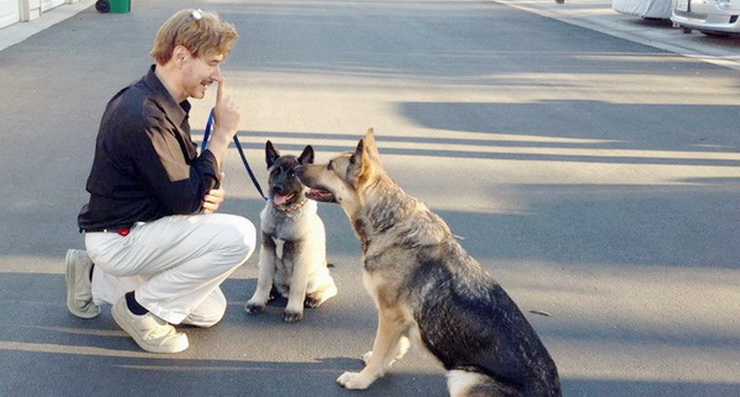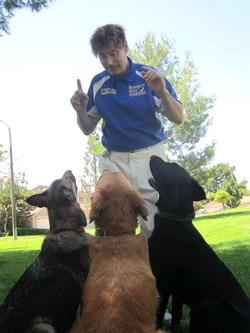The famous Russian Dog Wizard Vladae Roytapel has created Doglish as a way to communicate with dogs based on how dogs communicate with each other. He has learned to speak to dogs on their own frequency, using a combination of sounds and body language he calls Doglish. While some might laugh about the name, he's serious about the results. According to Vladae, dogs don't understand words, but they are finely tuned to tone.
![]()

There are three basic sounds to Doglish - a high-pitched voice that mimics a howl and signifies approval, an abrupt bark-like tone used for commands, and a deep, growling intonation for discipline. Vladae provides an example: Your playful dog grabs a shoe and won’t let go. Instead of hitting the dog or shouting to "let go", gently retrieve the shoe and use your best high-pitched howl-speak to say "Good girrrllllllll!" or "Good boooyyyyy!" He further explains: "You can't say "no" to the dog. He doesn't even understand your "no". He might even like your "no". He might think "no" is his nickname."
![]()

Other examples of Doglish gestures are:
- Leaning over the dog, just slightly, means "sit";
- Towering over him will communicate "down";
- A step forward is translated as an invasion of space and should be used for corrections;
- Moving backward is translated as an invitation to follow;
- Lowering yourself (kneeling down) is seen as a friendly gesture;
- Raising yourself into a posture over the dog is seen as a gesture of dominance.
Especially for the Russian Dog website.
We use cookies to offer you a better browsing experience, analyze site traffic, personalize content and ads.